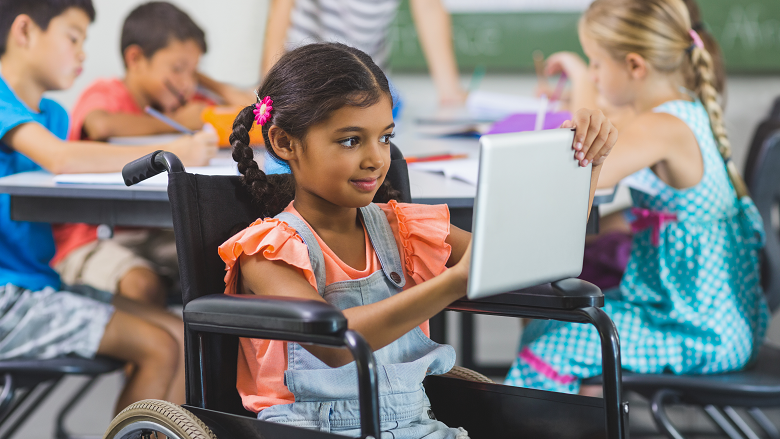Supporting students with learning disabilities involves more than simply modifying teaching techniques; it’s about fostering an inclusive, understanding environment that allows all students to flourish. With the right strategies, these students can overcome obstacles and achieve success academically, socially, and emotionally. In this article, we’ll explore effective methods, tools, and approaches to help create a positive learning experience for students with learning disabilities.
Understanding Learning Disabilities
Learning disabilities (LDs) are neurological disorders that impact how individuals process information, affecting their ability to learn at the same pace or in the same way as others. These challenges are not related to intelligence but typically affect areas like reading, writing, or mathematics.
Common Types of Learning Disabilities
Some of the most prevalent learning disabilities include:
- Dyslexia (difficulty with reading)
- Dyscalculia (difficulty with math)
- Dysgraphia (difficulty with writing)
- Auditory processing disorders (difficulty understanding spoken language) These disabilities manifest differently in each student, so it’s essential to identify the specific issues they face.
Symptoms and Challenges
Students with learning disabilities might:
- Struggle with following instructions
- Experience difficulty in reading or spelling
- Feel frustrated with their schoolwork
- Show poor memory or organizational skills
How Learning Disabilities Differ from Other Challenges
It’s important to distinguish learning disabilities from other academic struggles like lack of motivation or external factors (e.g., family stress). LDs require targeted strategies that address the neurological differences impacting learning.
The Role of Early Identification
Importance of Early Detection
Identifying a learning disability early allows for timely interventions, preventing students from falling too far behind academically or emotionally.
Signs to Look For in Children
Early indicators might include difficulty with reading, writing, or math, trouble following directions, or problems with organization. Teachers and parents should monitor for consistent patterns of difficulty.
Collaborating with Specialists for Assessment
Formal assessments from educational psychologists or specialists are crucial for diagnosing learning disabilities. Teachers can work with these professionals to create tailored support plans for students.
Creating an Inclusive Learning Environment
The Importance of an Inclusive Classroom
An inclusive classroom supports all students, not just those with learning disabilities. It fosters diversity, empathy, and a sense of community.
Classroom Layout and Design Tips
Organize the classroom to minimize distractions, use color-coded tools for organization, create quiet spaces, and ensure the environment is adaptable to various learning needs.
Encouraging Peer Support and Collaboration
Group work promotes collaboration and mutual support, helping students with learning disabilities feel less isolated and more integrated with their peers.
Personalizing Instructional Strategies
Differentiated Instruction: What It Is and How It Helps
Differentiated instruction adapts lessons to suit different learning styles. For students with learning disabilities, this might involve using visual aids, hands-on activities, or breaking instructions into simpler steps.
Tailoring Lessons to Meet Individual Needs
Some students may need more time on tasks, while others benefit from assignments that focus on their strengths. Flexibility and responsiveness are key.
Using Multisensory Teaching Approaches
Engaging multiple senses at once—such as having students trace words while saying them out loud—can help reinforce learning for students with learning disabilities.
Using Assistive Technology for Learning Disabilities
Types of Assistive Technologies Available
Assistive technology can significantly aid students. Tools such as speech-to-text software, text-to-speech readers, and audiobooks offer valuable support for those who struggle with reading and writing.
How Technology Can Bridge Learning Gaps
Technology provides alternative ways for students to access material that aligns with their strengths, helping to eliminate barriers created by traditional teaching methods.
Examples of Effective Tools
- Speech-to-text software allows students to dictate written work.
- Audiobooks give struggling readers access to the same material as their peers.
- Graphic organizers help students plan and structure their writing.
Building Strong Teacher-Student Relationships
Why Positive Relationships Matter
Establishing trust with students is crucial. When students feel understood and supported, they’re more likely to remain engaged and motivated in their learning.
Ways to Build Trust and Confidence
Actively listen to students, provide consistent encouragement, and take a strengths-based approach that emphasizes what students can do rather than what they struggle with.
Supporting Executive Functioning Skills
Understanding Executive Functioning Challenges
Students with learning disabilities often struggle with skills like planning, organization, and time management, known as executive functions.
Strategies to Support Organization and Time Management
Offer tools like planners, checklists, and timers to help students break tasks into manageable steps.
Using Visual Supports and Timers
Visual aids reinforce routines, while timers can help students manage time and transitions effectively.
Accommodations and Modifications
The Difference Between Accommodations and Modifications
- Accommodations provide support without altering learning expectations (e.g., extra time on tests).
- Modifications adjust the expectations or curriculum (e.g., reducing the number of assignments).
Examples of Classroom Accommodations
- Allow oral responses instead of written ones.
- Provide notes or outlines in advance.
- Offer quiet spaces for tests or assignments.
Encouraging Self-Advocacy in Students
Teaching Students to Understand Their Learning Needs
Students should be encouraged to understand their strengths and challenges, allowing them to identify the support they need.
Empowering Students to Communicate with Teachers
Teach students to ask for help and communicate their learning preferences to teachers.
Building Self-Confidence and Independence
Promoting self-advocacy enhances students’ confidence and leads to greater independence both in learning and in life.
The Role of Parents in Supporting Students
Collaborating with Parents for a Unified Approach
Teachers and parents should maintain regular communication to ensure consistent support at home and school.
Helping Parents Understand Their Child’s Learning Disability
Parents need to understand their child’s specific challenges to provide better support at home.
Collaborating with Specialists and Support Staff
The Role of Special Education Teachers and Counselors
Special education professionals are essential in developing individualized education plans (IEPs) and providing targeted support.
How to Work with Speech Therapists, Occupational Therapists, and Other Specialists
Working with a variety of specialists ensures students’ physical, cognitive, and emotional needs are met.
Monitoring Progress and Adjusting Strategies
The Importance of Ongoing Assessment
Regularly evaluating progress ensures that the strategies in place are effective, and adjustments can be made as needed.
How to Track Progress Effectively
Teachers can use assessments, observations, and student feedback to track progress over time.
Promoting Mental Health and Well-Being
Recognizing the Emotional Impact of Learning Disabilities
Learning disabilities can lead to feelings of frustration or low self-esteem. Addressing these emotional needs is just as important as academic support.
Providing Emotional and Psychological Support
School counselors, therapy, and peer support groups can help students manage the emotional challenges they may encounter.
Conclusion
Supporting students with learning disabilities requires a comprehensive approach. Understanding their individual needs, fostering an inclusive environment, utilizing assistive technology, and encouraging self-advocacy are key components of their success. Collaboration between teachers, parents, and specialists is crucial in ensuring students feel supported, enabling them to overcome challenges and reach their full potential.





